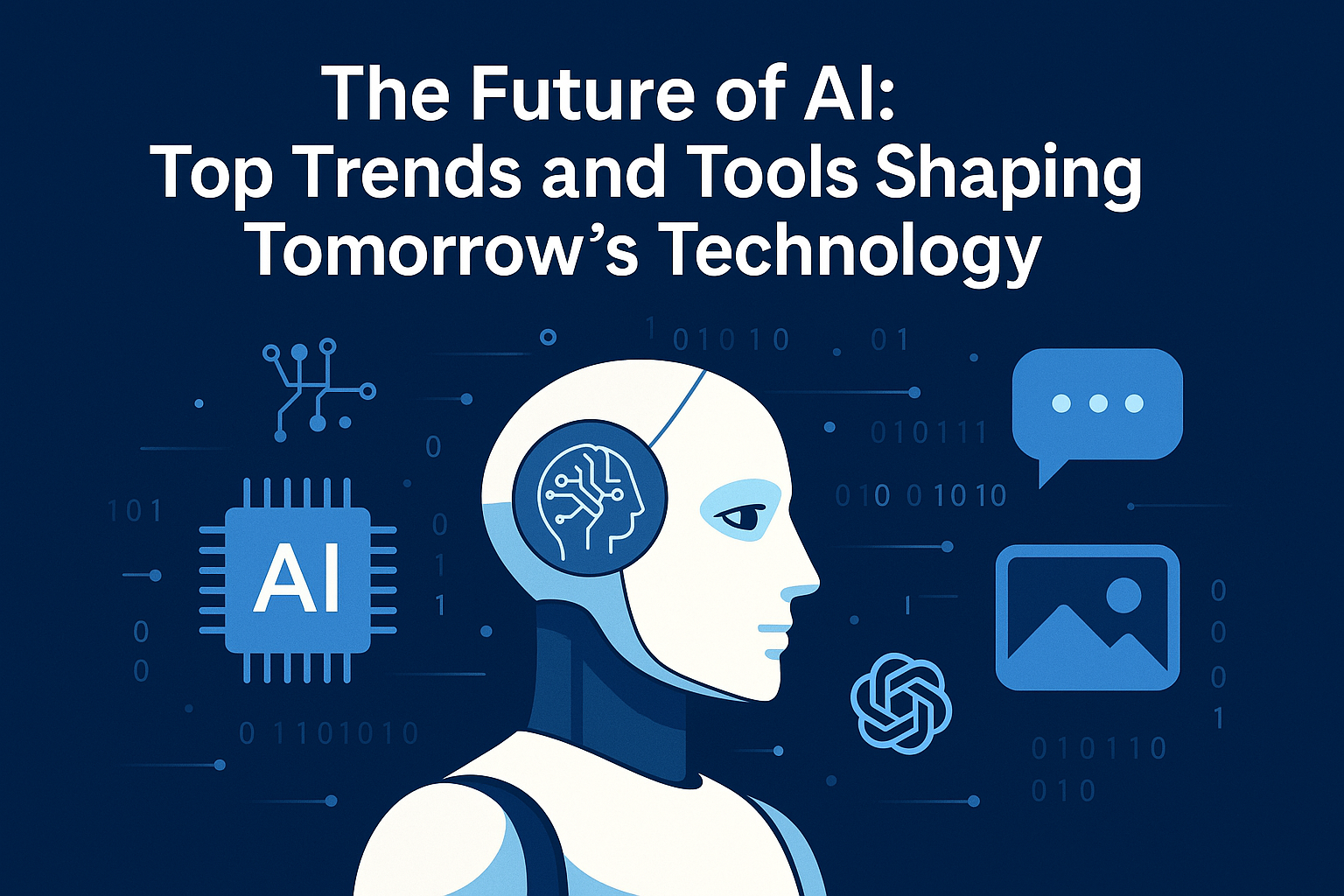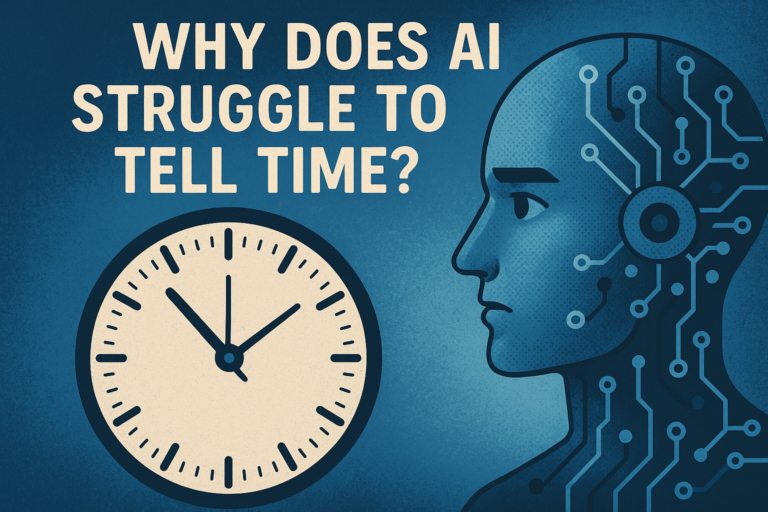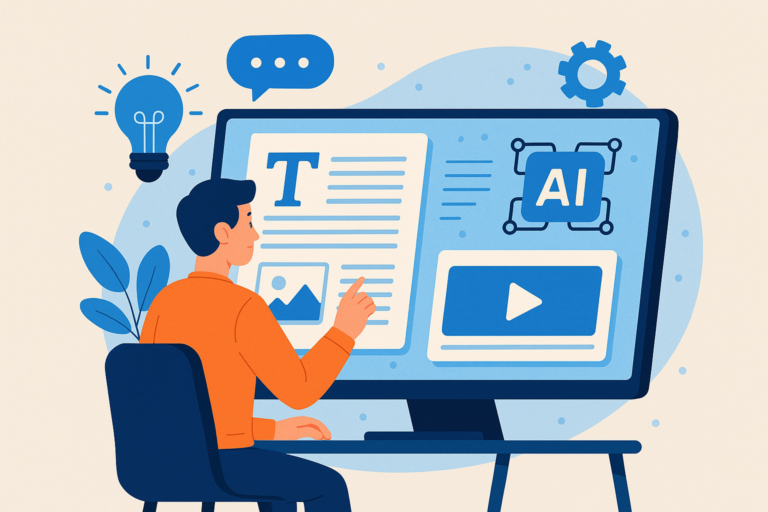The Future of AI: Top Trends and Tools Shaping Tomorrow’s Technology
In an era defined by rapid technological advancement, artificial intelligence (AI) stands at the forefront of innovation, fundamentally transforming how businesses operate, how consumers interact with technology, and how societies function. From the groundbreaking capabilities of artificial general intelligence to specialized AI chatbots revolutionizing customer experiences, the AI landscape continues to evolve at an unprecedented pace. This comprehensive guide explores the cutting-edge developments in AI technology, highlighting the platforms, tools, and visionaries leading this technological revolution.
1. The Evolution Toward Artificial General Intelligence
Artificial general intelligence (AGI) represents the holy grail of AI development—systems capable of understanding, learning, and applying knowledge across diverse domains with human-like flexibility and comprehension. Unlike narrow AI applications that excel at specific tasks, AGI aims to replicate the breadth of human cognitive abilities.
The Current State of AGI Research
While true AGI remains on the horizon, significant progress is being made by major players in the tech industry:
- OpenAI has explicitly stated AGI development as its mission, with each iteration of its models (from GPT-3 to GPT-4 and beyond) demonstrating increasingly sophisticated reasoning capabilities and knowledge integration.
- Microsoft AI has invested billions in OpenAI and is incorporating AGI research into its broader AI strategy, focusing on systems that can generalize learning across multiple domains.
- Apple AI has quietly built its foundational models while focusing on on-device intelligence that preserves privacy while expanding capabilities.
- Scale AI provides the data infrastructure critical for training these increasingly complex systems, helping to annotate and prepare the massive datasets needed for AGI development.
“We’re seeing models that can now transfer learning across domains in ways that were impossible just two years ago,” notes Dr. Eliza Montgomery, AI Research Director at Cambridge University. “While we’re still far from true AGI, the acceleration of capabilities suggests we’re moving faster than many predicted.”

Measuring Progress Toward AGI
Leading research institutions are developing new benchmarks to track progress toward artificial general intelligence:
- Task generalization tests that measure how well AI systems apply learning from one domain to entirely new problems
- Common sense reasoning evaluations that assess an AI’s understanding of physical world constraints and social dynamics
- Creative problem-solving challenges that require novel combinations of skills and knowledge
The race toward AGI has significant implications for society, raising important questions about governance, economic impact, and the relationship between human and machine intelligence. Organizations like the Future of Life Institute and AI Alignment Forum are actively working to ensure these powerful systems align with human values and benefit humanity.
2. The Chatbot Revolution: Transforming Conversations and Commerce
AI chatbots have evolved from simple rule-based systems to sophisticated conversational agents that can handle complex interactions, understand context, and provide personalized responses. This transformation is reshaping customer service, e-commerce, and personal productivity.
Leading Chatbot Platforms and Their Capabilities
- ChatGPT OpenAI: As the most widely adopted AI chatbot, ChatGPT has set new standards for conversational AI with its ability to generate human-like responses, provide detailed explanations, and assist with a wide range of tasks from content creation to coding assistance.
- Claude AI: Developed by Anthropic with a focus on constitutional AI principles, Claude offers nuanced conversations with enhanced safety features and robust context handling, making it particularly valuable for sensitive applications.
- Poly AI: Specializing in voice-based customer service interactions, Poly AI creates natural-sounding conversations that can handle complex customer service scenarios without human intervention.
- Otterai: A newcomer focused on small business applications, Otterai provides accessible chatbot creation tools that require minimal technical expertise while delivering personalized customer experiences.
- Wiz AI: Targeting enterprise security applications, Wiz AI offers conversational interfaces for managing complex cloud security protocols and responding to potential threats.
Real-World Applications of AI Chatbots
The implementation of chatbot AI across industries is delivering measurable business value:
- Healthcare: AI chatbot online screening tools are reducing unnecessary hospital visits by 27% while improving patient satisfaction scores
- Financial Services: Chatbot AI systems handling basic account inquiries and transactions save institutions an average of $0.70 per interaction
- E-commerce: Businesses implementing AI chatbots report a 35% increase in cart completion rates and 42% higher customer satisfaction scores
- Human Resources: AI chat solutions automate 67% of routine employee inquiries, freeing HR personnel for more strategic functions
“The most successful implementations are those that blend AI chatbot capabilities with human expertise,” explains Maria Chen, Customer Experience Director at Zendesk. “Organizations that create seamless handoffs between chatbot AI and human agents see the highest satisfaction scores and operational efficiency.”
Conversational Design: The Key to Effective AI Chat
Creating natural, helpful AI chat experiences requires thoughtful design considerations:
- Persona development: Establishing a consistent voice and personality that aligns with brand values
- Conversation flow mapping: Anticipating user needs and potential conversation branches
- Failure handling: Gracefully managing situations where the AI chatbot cannot provide an appropriate response
- Continuous improvement mechanisms: Analyzing conversations to identify gaps and enhancement opportunities

3. Generative AI: Redefining Creative Possibilities
Generative AI represents one of the most visible and transformative applications of artificial intelligence technology. These systems can create new content—including text, images, audio, video, and code—that often rivals human-created work in quality and creativity.
Text Generation: Beyond Basic Content
Chat GPT 4 (or Chat GPT4 as it’s sometimes written) has transformed text generation capabilities, enabling:
- Long-form content with coherent narrative structure and consistent arguments
- Code generation that includes documentation and follows best practices
- Technical writing that accurately explains complex concepts
- Creative fiction with compelling characters and plot development
OpenAI’s API provides developers access to these capabilities, allowing integration of sophisticated text generation into applications across industries. Meanwhile, competing models from companies like Anthropic (Claude), Cohere, and AI21 Labs are pushing boundaries in specialized text generation domains.
Visual Content Creation
Image generation has seen extraordinary advances through several groundbreaking platforms:
- DALL-E: OpenAI’s system creates realistic images and art from textual descriptions, with DALL-E 3 offering unprecedented detail and accuracy in interpreting complex prompts.
- Midjourney: Focusing on artistic quality, Midjourney AI produces visually stunning images that often have a distinctive aesthetic quality, making it particularly popular among designers and digital artists.
- Stable Diffusion: As an open-source alternative, Stable Diffusion has spawned numerous specialized implementations and community-driven enhancements.
“We’re witnessing a democratization of visual creation,” notes Jesse Zhang, Creative Director at Adobe. “Generative AI tools like Midjourney are enabling people without traditional artistic training to visualize their ideas with remarkable fidelity.”
The business applications of these visual generation capabilities include:
- Product visualization and prototyping
- Marketing content creation at scale
- Customized visual assets for different audience segments
- Concept exploration during early design phases
image generated by midjourney
Three hikers trek through a sunlit trail, surrounded by golden grass and hills, with backpacks and trekking poles at sunset.

Audio and Video Generation
Generative AI is also transforming audio and video production:
- ElevenLabs and similar platforms generate remarkably natural-sounding voices for content in multiple languages
- Runway and other video generation tools can create and edit video content from text prompts
- Soundraw and AIVA compose original music based on mood, style, and length specifications
These tools are reducing production costs and timelines while enabling new forms of personalized content.
Ethical and Practical Considerations
The power of generative AI brings important considerations:
- Copyright and attribution: Questions about training data usage and ownership of generated content
- Misuse potential: Concerns about deepfakes and synthetic content for disinformation
- Quality control: Maintaining standards when producing content at scale with generative AI
- Artistic impact: Evolving relationship between human creators and AI tools
Meta AI and other research organizations are actively developing both technical solutions (like content provenance systems) and ethical frameworks to address these challenges.
4. AI Assistants: Personalized Intelligence at Your Service
AI assistants represent the convergence of natural language understanding, personalization, and task automation, bringing artificial intelligence into daily workflows and personal productivity.
The Evolution of AI Assistants
Today’s AI assistants have evolved significantly from earlier versions:
- Contextual awareness: Modern assistants maintain conversation history and understand references to previous interactions
- Multimodal capabilities: Many can now process and generate text, images, and in some cases audio
- Integration depth: Deep connections with productivity tools and knowledge bases
- Personalized learning: Adaptation to individual user preferences and patterns
Leading AI Assistant Platforms
Several major platforms are competing to define the future of AI assistants:
- OpenAI’s assistants API: Allows developers to create specialized assistants with specific capabilities and knowledge bases
- Microsoft AI Copilot: Deeply integrated with Microsoft’s productivity ecosystem
- Apple AI’s Siri evolution: Moving toward more conversational and contextually aware interactions
- Google’s AI assistant ecosystem: Blending search capabilities with personalized assistance
The most effective implementations combine multiple AI technologies, explains Dr. Rajesh Kanwal, AI Product Manager at Samsung: “The best AI assistant solutions blend several capabilities—natural language understanding, knowledge retrieval, reasoning, and personalization—to create experiences that feel genuinely helpful rather than just responsive.”
Specialized AI Assistants
Beyond general-purpose assistants, specialized AI assistants are emerging across industries:
- Healthcare: Clinical decision support assistants that help physicians navigate complex cases
- Legal: Research assistants that can analyze case law and suggest relevant precedents
- Education: Learning assistants that provide personalized tutoring and feedback
- Finance: Investment research assistants that analyze market data and company information
These specialized assistants combine domain-specific knowledge with AI capabilities to augment professional expertise rather than replace it.

5. Key Innovators Shaping the AI Landscape
Behind the rapid advancement of artificial intelligence are visionary leaders and organizations pushing the boundaries of what’s possible.
Influential Leaders
- Mira Murati: As CTO of OpenAI, Mira Murati has been instrumental in guiding the development and responsible deployment of some of the world’s most powerful AI systems, including ChatGPT and DALL-E.
- Demis Hassabis: The co-founder and CEO of Google DeepMind brings a background in neuroscience and gaming to AI development, focusing on systems that can master complex environments through reinforcement learning.
- Fei-Fei Li: Director of the Stanford AI Lab and co-director of Stanford’s Human-Centered AI Institute, Li is advancing the field of computer vision while advocating for human-centered AI development.
- Yoshua Bengio: A pioneer in deep learning research, Bengio continues to advance the theoretical foundations of AI while promoting responsible innovation through the Montreal Declaration for Responsible AI.
Organizations Driving Innovation
Beyond individual leaders, several organizations are significantly influencing the AI landscape:
- OpenAI: From ChatGPT OpenAI to DALL-E, the organization continues to release groundbreaking models while navigating the complex balance between open research and responsible deployment.
- Scale AI: Providing the data infrastructure critical for training advanced AI systems, Scale AI works behind the scenes to enable many of the most impressive AI capabilities.
- Anthropic: Founded with a focus on AI safety, Anthropic’s Claude AI represents an alternative approach to large language model development with emphasis on helpfulness, harmlessness, and honesty.
- Microsoft AI: Through strategic partnerships and internal research, Microsoft is rapidly integrating AI capabilities across its product ecosystem while investing in frontier AI research.
- Meta AI: Despite public challenges, Meta’s fundamental AI research continues to advance the field, particularly in multimodal systems and efficient training techniques.
- Apple AI: Taking a distinctive approach focused on on-device intelligence and privacy preservation, Apple’s AI strategy emphasizes integration with hardware and user experience.

6. Building an Artificial Intelligence Website: Strategies for Success
Creating an effective artificial intelligence website requires thoughtful planning and execution, whether you’re showcasing AI products, offering AI services, or demonstrating AI capabilities.
Essential Elements of an AI Website
An artificial intelligence website should typically include:
- Clear explanation of AI capabilities: Demystifying complex technology for various audience segments
- Interactive demonstrations: Allowing visitors to experience AI capabilities firsthand
- Case studies and use cases: Demonstrating practical applications and results
- Technical documentation: For developer audiences and integration partners
- Ethical AI statements: Addressing responsible use and development practices
“Successful AI websites bridge the gap between technical capability and practical value,” explains Sophia Washington, Digital Strategy Director at Tech Horizon Consulting. “They translate complex technical achievements into benefits that resonate with their target audience.”
Implementation Approaches
When building an AI-focused website, several technical approaches can be considered:
- AI chatbot integration: Implementing conversational interfaces to answer questions about your AI offerings
- API documentation: For AI services offering programmatic access
- Interactive demos: Allowing visitors to test capabilities like text generation or image creation
- Performance metrics: Transparently sharing benchmarks and capabilities
- Educational resources: Helping users understand how to effectively implement your AI solutions
Showcasing AI Capabilities
For companies offering AI products or services, demonstrating capabilities effectively is crucial:
- Before/after comparisons: Showing processes or outputs with and without AI assistance
- Real-time generation: Allowing visitors to experience generative AI capabilities directly
- ROI calculators: Helping potential customers quantify the business value of AI implementation
- Integration visualization: Showing how AI solutions connect with existing systems and workflows

7. Practical Implementation: Putting AI to Work
Moving from theoretical understanding to practical implementation requires strategic planning and careful execution.
Assessment and Strategy Development
Organizations should begin with a comprehensive assessment:
- Process analysis: Identifying areas where AI can deliver the most value
- Data readiness evaluation: Assessing data quality, accessibility, and governance
- Skills inventory: Determining internal capabilities and training needs
- Ethical review: Considering potential impacts and mitigation strategies
“The most successful AI implementations start with clear problem definitions rather than technology enthusiasm,” advises Dr. Maya Patel, AI Transformation Lead at Deloitte. “Organizations should ask ‘What specific challenge are we trying to solve?’ before selecting AI tools.”
Implementation Approaches
Several paths to implementation exist:
- API integration: Using services like OpenAI API or Claude AI to add capabilities to existing applications
- SaaS solutions: Adopting specialized AI platforms for specific functions
- Custom development: Building proprietary solutions for unique requirements
- Hybrid approaches: Combining off-the-shelf components with customized elements
Measuring Success
Effective AI implementation requires clear success metrics:
- Efficiency gains: Time saved through automation or augmentation
- Quality improvements: Error reduction or consistency enhancement
- Cost reduction: Direct and indirect savings from AI implementation
- Revenue impact: New opportunities or enhanced customer experiences
- Employee and customer satisfaction: Qualitative measures of experience improvement
Continuous Improvement
AI implementation is never complete but rather an ongoing process:
- Performance monitoring: Tracking key metrics over time
- Feedback loops: Gathering input from users and stakeholders
- Model updating: Refreshing AI systems with new data and capabilities
- Expanding use cases: Applying successful approaches to additional areas
8. Emerging Trends and Future Directions
As artificial intelligence continues to evolve, several trends are emerging that will shape its development in the coming years:
Multimodal AI
The integration of multiple types of data and interaction modes represents a significant frontier:
- Text-to-everything capabilities: Generating various outputs (images, video, code) from textual prompts
- Cross-modal reasoning: Understanding relationships between concepts across different types of data
- Unified modeling approaches: Single models that can process and generate multiple data types
AI Governance and Regulation
As AI capabilities grow more powerful, governance frameworks are evolving:
- Risk-based regulatory approaches: Tailoring oversight to potential impact
- International coordination: Efforts to create compatible regulatory frameworks across jurisdictions
- Industry self-regulation: Standards and best practices developed by AI creators and implementers
- Technical safeguards: Building responsible AI principles into the technology itself
AI-Human Collaboration Models
The most productive future likely involves effective human-AI collaboration:
- Augmented intelligence approaches: Using AI to enhance human capabilities rather than replace them
- Complementary strengths: Leveraging AI for data processing and pattern recognition while humans provide judgment and creativity
- Effective handoffs: Creating smooth transitions between AI and human tasks
Democratization of AI
Access to AI capabilities continues to expand:
- No-code AI tools: Platforms like Wiz AI that make AI accessible without programming skills
- Specialized vertical solutions: Industry-specific AI tools designed for particular use cases
- Education and skills development: Broader training in AI concepts and implementation

Conclusion: Navigating the AI-Powered Future
The artificial intelligence landscape continues to evolve rapidly, with breakthroughs in artificial general intelligence research, increasingly sophisticated AI chatbots, powerful generative AI capabilities, and specialized AI assistants. Organizations across industries are finding innovative ways to implement these technologies, creating value while navigating complex ethical and practical considerations.
As we look toward the future, several principles can guide effective engagement with AI:
- Value-focused implementation: Beginning with clear problems and desired outcomes rather than technology for its own sake
- Responsible development: Considering ethical implications and potential impacts
- Continuous learning: Staying informed about evolving capabilities and best practices
- Human-centered design: Creating AI systems that complement human strengths rather than simply replacing human functions
By thoughtfully engaging with artificial intelligence—whether through ChatGPT, Claude AI, Midjourney AI, or other platforms—organizations and individuals can harness its transformative potential while managing associated challenges. The future belongs not simply to artificial intelligence itself but to those who can effectively integrate it into human systems and processes in ways that create genuine value.








0z5iiu
52pj8j